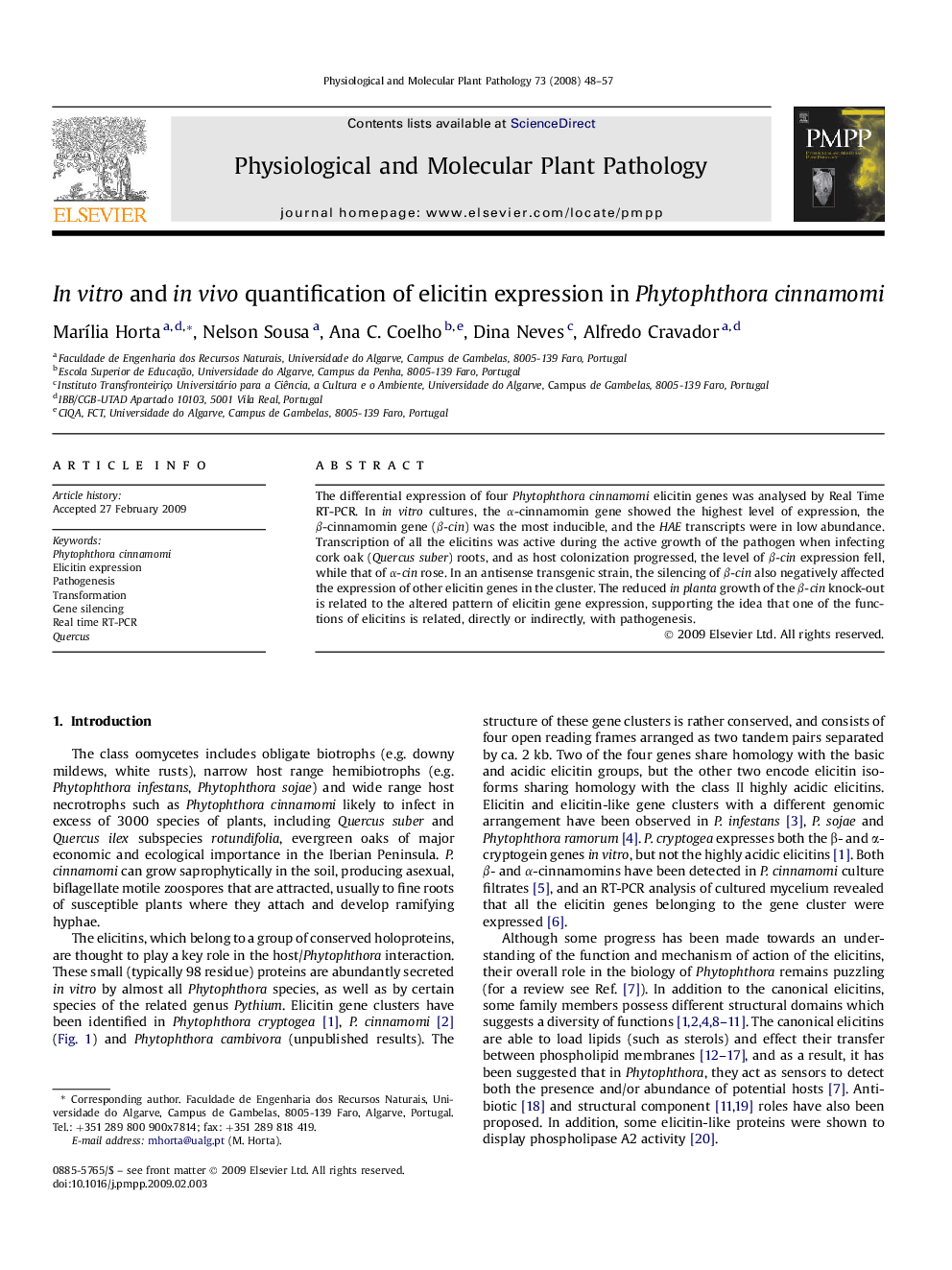| Article ID | Journal | Published Year | Pages | File Type |
|---|---|---|---|---|
| 2836609 | Physiological and Molecular Plant Pathology | 2008 | 10 Pages |
Abstract
The differential expression of four Phytophthora cinnamomi elicitin genes was analysed by Real Time RT-PCR. In in vitro cultures, the α-cinnamomin gene showed the highest level of expression, the β-cinnamomin gene (β-cin) was the most inducible, and the HAE transcripts were in low abundance. Transcription of all the elicitins was active during the active growth of the pathogen when infecting cork oak (Quercus suber) roots, and as host colonization progressed, the level of β-cin expression fell, while that of α-cin rose. In an antisense transgenic strain, the silencing of β-cin also negatively affected the expression of other elicitin genes in the cluster. The reduced in planta growth of the β-cin knock-out is related to the altered pattern of elicitin gene expression, supporting the idea that one of the functions of elicitins is related, directly or indirectly, with pathogenesis.
Related Topics
Life Sciences
Agricultural and Biological Sciences
Plant Science
Authors
MarÃlia Horta, Nelson Sousa, Ana C. Coelho, Dina Neves, Alfredo Cravador,
